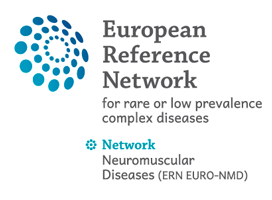01 Oct 2019
Consensus-based care recommendations for congenital and childhood-onset myotonic dystrophy type 1
Authors:
Nicholas E. Johnson, MD, MSCI, Eugenio Zapata Aldana, MD, Nathalie Angeard, PhD, Tetsuo Ashizawa, MD, Kiera N. Berggren, MA/CCC-SLP, MS, Chiara Marini-Bettolo, MD, PhD, Tina Duong, MPT, PhD, Anne-Berit Ekström, MD, PhD, Valeria Sansone, MD, Cuixia Tian, MD, Leah Hellerstein, LCSW, MPH, and Craig Campbell, MD on behalf of the Myotonic Dystrophy Foundation
Abstract
Purpose of review
Myotonic dystrophy type 1 is a multisystemic disorder caused by
a noncoding triplet repeat. The age of onset is variable across the
lifespan, but in its most severe form, the symptoms appear at birth
(congenital myotonic dystrophy) or in the pediatric age range
(childhood-onset myotonic dystrophy). These children have
a range of disabilities that reduce the lifespan and cause significant
morbidity. Currently, there are no agreed upon recommendations
for caring for these children.
Recent findings
The Myotonic Dystrophy Foundation recruited 11 international clinicians who are experienced with congenital and childhood-onset myotonic dystrophy to create consensus-based care recommendations. The experts used a 2-step methodology using elements of the single text procedure and nominal group technique. Completion of this process has led to the development of clinical care recommendations for this population.
Summary
Children with myotonic dystrophy often require monitoring and interventions to improve the lifespan and quality of life. The resulting recommendations are intended to standardize and
improve the care of children with myotonic dystrophy.

